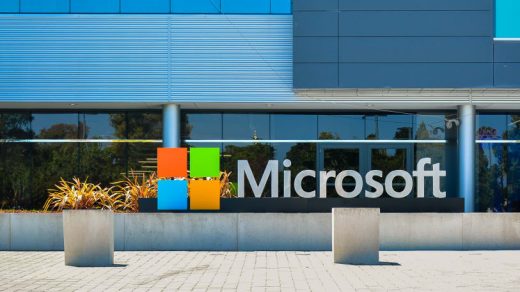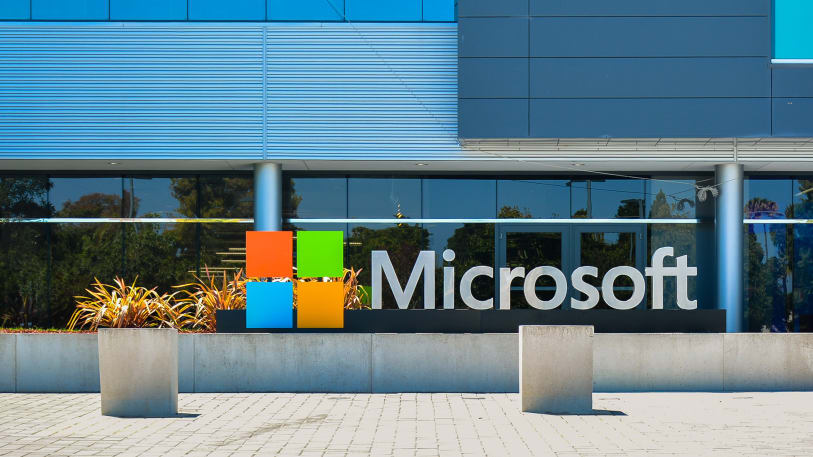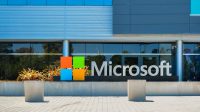Diary Of An Ex-Microsoft Intern
If there was one company that dominated computing in the latter part of the 20th century it was Microsoft. While Apple may have been first on several fronts, by the mid-90s a PC running Windows could be found in virtually every home and business in the country. But with Apple’s renaissance in the new millennium and other companies like Google and Facebook innovating on the internet and services front, Microsoft soon seemed to take a back seat to other “hot” companies of the day–especially when it came to recruiting talented developers.
Yet in the past five years, that’s changed. Microsoft is increasingly being seen as an innovator again with products like its HoloLens, its Surface line of computers, and even Windows 10. This renaissance in Redmond has made the company a top choice to intern for, according to many students I spoke with. Will Lawrence, currently a junior in International Economics at the University of British Columbia, told me what his internship at Microsoft (that just ended last month) was like.
On His Internship Role At Microsoft
My internship took place during the winter term of 2017, between January 7th – April 28th. I was 20 and a junior at the time. I was a User Experience (UX) Design Intern in the Microsoft Garage Internship program. The unique format of this internship creates teams of six interns–five developers and one UX Designer–to work on an experimental project for a Microsoft sponsor, like Azure, HoloLens, or Cortana. Over the course of the four-month internship, we were responsible for scoping our project, building it from scratch, and working with Microsoft stakeholders along the way.
My role consisted of building the user experience for a conversational, artificial-intelligence project for our sponsor, Microsoft Teams. This included mapping user flows, writing dialogue, and a considerable amount of user testing.
On How He Found The Opportunity
A friend who completed a summer internship at Microsoft referred me in July. I took a few weeks to assemble my portfolio–a necessity for all aspiring designers. I spent long hours developing the stories behind each of my projects, paying special attention to the design process I executed for each one. After completing my portfolio, my friend submitted my details into the Microsoft referral program for a general UX design internship.
By the middle of October, I got an email from a recruiter asking if I was available for either a winter (January-April) or summer (May-August) internship for the Vancouver Garage internship. I didn’t know anything about the Garage, but I told her I was available.
On The Interview Process With Microsoft
The interview consisted of two stages: the phone screening and the on-site interviews. The phone screen was 30 minutes long and nearly the entire interview was walking the recruiter through my design process on a single portfolio item. By the end of the call, she indicated that she would be interested in moving me forward to the on-site interview taking place a week later.
This on-site portion consisted of one 15-minute portfolio presentation as well as four interviews. For the presentation portion, I discussed my unique story as a designer, a high-level overview of my portfolio, and an in-depth walk-through of two specific UX projects. Next was the four 45-minute interviews, each of which consisted of a design challenge like, “How would you design a phone for deaf people?” and a general design question, like “What is a design trend you like and why do you like it?” The interviewers were employees from various degrees of seniority across Microsoft, all of whom were very knowledgeable in the field.
On The Qualities That Helped Him Score A Microsoft Internship
I was really fortunate to get the internship, and there were three qualities that I think made me successful in the interview process. The first was that I had experience working closely with developers. This is a critical feature for this role given that your entire internship would be working with five developers to hit weekly milestones. The second quality was my background in project management. Having managed projects in two tech startups prior to this internship, I had demonstrated the ability to set agile development goals, prioritizing features, and working with a Scrum board–tasks that we ended up doing every day of the internship. Finally, I demonstrated communication skills, which are essential for the Garage program. As I soon found out, communicating through presentations and meetings became a major part of our internship, and that was a skill I brought to the table.
On The Average Workday Of A Microsoft Intern
My typical day could be broken down into four parts: team meetings, stakeholder meetings, design tasks, and hanging out with interns. We would start every day with a “standup” team meeting where we would talk about our progress the previous day and what we intended to work on today. At a separate team meeting, we would set weekly milestones for ourselves called “sprints.” After each of these sprints, we would have a “sprint retrospective,” where our team touched based on our progress and reflected on our mistakes.
Next, we had one or two stakeholder meetings a day with either our project sponsor, program manager, or coaches. All of these people were very invested in our project and wanted us to succeed, so they offered their help wherever possible. I personally enjoyed these meetings because they allowed us to demonstrate progress and get feedback from people who were experienced with the product development cycle.
Then came the actual work of designing my project. This was easily the best part, as I had complete creative freedom and great resources to get the job done. I organized my days into tackling one large task, like designing a logo, making a conversation dialogue tree, or user testing, because it let me maximize the amount of time I spent in a productive flow state. The type of tasks was constantly changing as the project continued to move along the product development cycle. This kept things interesting throughout the internship, as it forced me to work on tasks that were new and challenging.
Finally, a large part of my internship was spending time with the 23 other interns in the Garage. I spent my fair share of time playing chess, foosball, or ping-pong during our breaks and going to new restaurants in downtown Vancouver for lunch. One of the best parts of the internship was that our office had a maker space stocked with 3D printers, laser cutters, drones, and all the latest tech. I found myself coming in on weekends to work on side projects or just play with the toys.
On Some Of His Best Experiences As A Microsoft Intern
We took a trip to Microsoft HQ in Redmond to demo our products to our entire sponsor division, including the corporate vice president, the leadership team, and about 300 full-time employees. At the end of the internship, we were able to have an internal release for our project. This was a big milestone for me because it was the first time that I had the ability to ship a legitimate product (i.e., not a hackathon project) to a real audience (i.e., not my mother). We also organized a ton of awesome weekend trips around British Columbia, including winter surfing in Tofino, snowboarding in Whistler, and a road trip through the Canadian Rockies in Banff National Park.
On Whether Microsoft Could Improve Its Internship Experience
The Garage internship is unique and is therefore not well suited for everyone. There are many talented developers or designers who may not succeed in this internship because it has a heavy focus on teamwork, project management, and independent decision-making. With that said, I think Microsoft needs to promote this internship more because I think it is a great learning experience for students who are interested in entrepreneurship and project management.
On The Lasting Benefits Of A Microsoft Internship
This internship has opened many doors for me, both inside and outside Microsoft. Interning at a company like Microsoft signals to others that you pass a certain bar of hard skills and aptitude, so people are generally more receptive to speaking with you when they know you’ve had the experience at a company like Microsoft. People were a lot more receptive to my cold emails and, as any student can tell you, this is a huge advantage when securing future jobs.
Moreover, being exposed to how Microsoft operates is a huge asset when looking for future roles. Microsoft has high standards for their product development cycle, and I was, fortunately, able to learn more about these processes, which I feel makes me a better designer moving forward. For example, when releasing a product through the Microsoft Garage, products must go through compliance processes around Accessibility, Security, Privacy, and Global Readiness. Going through this procedure and understanding what is necessary to release a product at scale is very attractive to future employers.
On What Others Could Do To Land An Internship At Microsoft
Work on projects: Your academic work is close to irrelevant in the hiring process; I’m the perfect example of that–I’m studying International Economics, but got hired as a UX Designer. Microsoft only cares about the projects that you’ve worked on that demonstrate your abilities. Speaking specifically to design, build out your portfolio by going to hackathons, redesigning websites for companies you like, or reimagining the onboarding process for your favorite apps.
Understand your value proposition: Understand your unique value proposition and play to it in your interviews. For example, I knew that my communication and project management skills were some of my strengths, so I continually referred to them throughout my interview. This will allow you to steer the conversation toward your strong suits and reinforce your key offerings.
Practice behavioral interview questions: When people think of the recruiting process for tech firms, they focus almost exclusively on practicing for the technical portion of the interview. While this section is important, what separates mediocre candidates from great candidates is their ability to answer questions like “Tell me about yourself,” “Why Microsoft?” and “Tell me about a time you needed to work on a team.” The key when answering these questions is to be memorable–that means avoiding clichés and being honest.
From design-challenge interview questions to creating a product that’s ready to ship in four months, this is what it’s like to intern for Microsoft.
If there was one company that dominated computing in the latter part of the 20th century it was Microsoft. While Apple may have been first on several fronts, by the mid-90s a PC running Windows could be found in virtually every home and business in the country. But with Apple’s renaissance in the new millennium and other companies like Google and Facebook innovating on the internet and services front, Microsoft soon seemed to take a back seat to other “hot” companies of the day–especially when it came to recruiting talented developers.
Fast Company , Read Full Story
(46)








